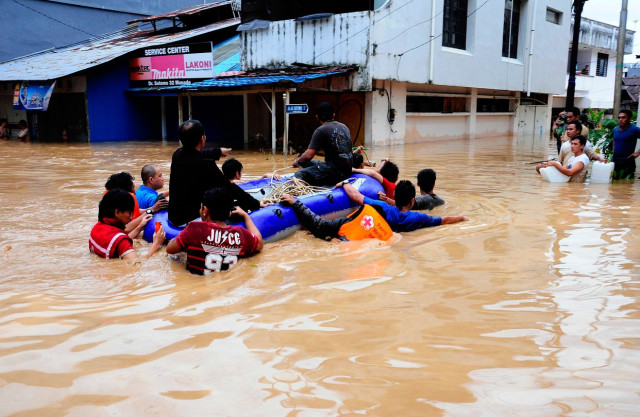Tsunami Waves Erupted by 7.5-Magnitude Earthquake, Urgent Evacuations Advised
- Posted on January 2, 2024
- Natural Disaster
- By Arijit Dutta
- 374 Views
On January 1, 2024, a 7.5-magnitude quake struck Japan, causing tsunami waves up to a meter high. Urgent evacuations were urged as central Japan faced severe damage, fires, and power outages. While casualties were feared, authorities mobilized forces for rescue and assessment efforts.
 Image Source -www.britannica.com
Image Source -www.britannica.com
On
January 1, 2024, a powerful earthquake
with a magnitude of 7.5 struck Japan, setting off a chain of devastating
events. The earthquake unleashed tsunami waves that surged over a meter high,
wreaking havoc in central Japan. The impact was immediate, causing significant
damage to homes and infrastructure, igniting fires, and prompting widespread
power outages.
Initial
reports suggested the earthquake's epicenter was in Ishikawa prefecture,
situated on the Sea of Japan side of Honshu, the country's main island. The
U.S. Geological Survey (USGS) confirmed the quake's magnitude and its
subsequent repercussions. Authorities feared casualties, with two individuals
reportedly missing in the aftermath.
The
seismic disturbance sent shockwaves through the region, with over 50 quakes of
3.2 magnitudes or higher reported during the New Year's Day festivities. This
heightened seismic activity heightened alarm among residents and authorities.
Emergency
broadcasts interrupted regular programming as Prime Minister Fumio Kishida
urgently advised people in vulnerable areas to evacuate immediately to higher
ground. The urgency echoed across media platforms, urging citizens to
prioritize their safety above all else.
The
tsunami waves struck various regions, with Wajima Port experiencing waves
reaching at least 1.2 meters. Concerns escalated initially when warnings
projected waves as high as five meters. Fortunately, subsequent assessments led
to a downgrade of the warning to waves up to three meters, alleviating some
immediate fears.
The
Japan Meteorological Agency (JMA) and the U.S. Pacific Tsunami Warning Center
gradually indicated that the imminent danger had largely passed. However,
vigilance remained high as aftershocks and potential further quakes were
anticipated in the coming days.
The aftermath painted a grim picture of collapsed buildings, injuries, and reports of individuals trapped within the debris. Rescue and firefighting efforts faced immense challenges due to damaged roads and infrastructure.
Also Read: Arun Yogiraj, Mysuru Sculptor's Ram Lalla Idol To Be Installed At Ayodhya Temple On January 22
Transportation
services, including bullet train operations, were suspended, and power outages
affected tens of thousands of households in Toyama, Ishikawa, and Niigata
prefectures. Flights and mobile phone coverage were also disrupted, adding to
the chaos.
In
response, Japan's defense authorities swiftly mobilized military personnel for
assistance. The nation, accustomed to frequent seismic activity, was reminded
of the traumatic 2011 earthquake-triggered tsunami that led to catastrophic
consequences.
As of the latest reports, there were no abnormalities reported at the Shika nuclear power plant or other nuclear facilities. Despite the devastation, Japan's stringent construction regulations aimed at earthquake resilience and emergency preparedness remained central during the crisis.




